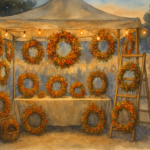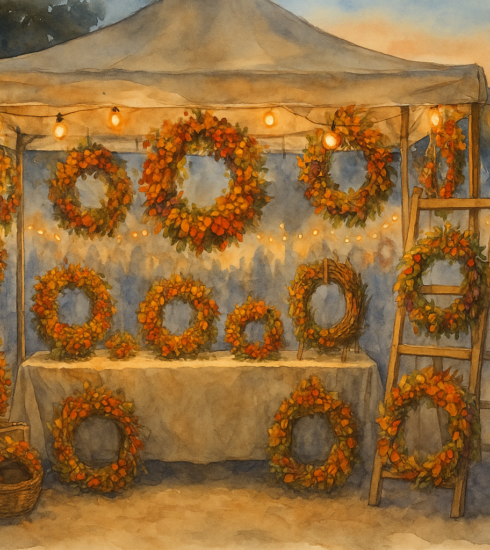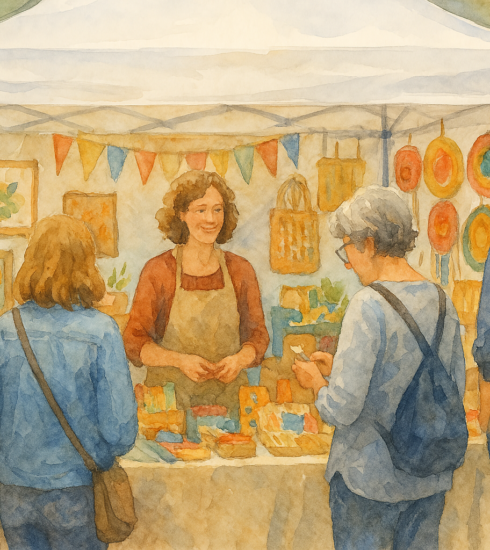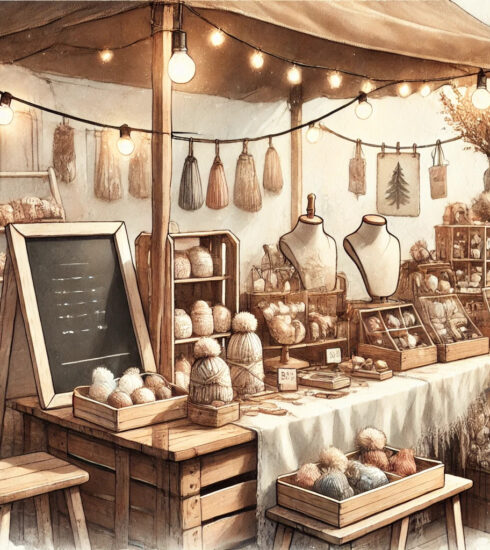Why Am I Not Making More at Craft Fairs? (And How High Profit Crafts Fix That)
Key Takeaways
- Average revenue at a craft fair varies: From as low as $32 to $3,000+ depending on event size and product pricing.
- Booth costs eat into profit: Materials, travel, and fees can take 30–50% or more from your revenue.
- High profit crafts help you scale: Low-cost, high-margin items allow you to make more from less work.
- Top earners treat it like a job: Some make over $45,000 a year by attending 30+ fairs.
- Craft fairs aren’t just about money: Many crafters use them to test products, gain feedback, and grow their brand.
How Much Money Are People Really Making at Craft Fairs?
This is the question every new vendor asks. And not enough experienced vendors answer clearly. People throw out numbers like “a good day is $500” or “I once made $2,600 in a single day,” but the full picture isn’t always shared. And if you’re not selling high profit crafts, that big sales day might not mean much after expenses.
So let’s break it down. Here’s what actual vendors report earning:
| Event Type | Shopper Attendance | Typical Revenue |
| Large (10,000+) | High | $1,583 – $3,166 |
| Medium (2,000+) | Medium | $316 – $633 |
| Small (300+) | Low | $47 – $95 |
That’s a huge range. Some crafters hit $1,000+ in a day. Others make barely enough for lunch. It’s not just about the crowd size—it’s about what you sell and how you sell it.
What’s a “good” day?
A lot of vendors say that a good event is one where you make 7 to 10 times your booth fee. So if you pay $200 to get in, you should aim for $1,400 to $2,000 in sales. That doesn’t mean it’s all profit. But if you’re under that number, it might not have been worth your time.
What Affects How Much You Make at Craft Fairs?
There’s a reason one vendor walks away with a wad of cash while the person in the next booth barely covers gas. It’s not just about talent or luck. Several factors shape your earnings—and they stack on each other. Miss one, and you’ll feel it. Miss a few, and you’re eating vending machine chips for dinner.
Let’s talk about the biggest levers that move your income up or down.
1. Product Type and Price Point
You’ve got to sell what people are buying—but also what makes you money. That’s where high profit crafts come in.
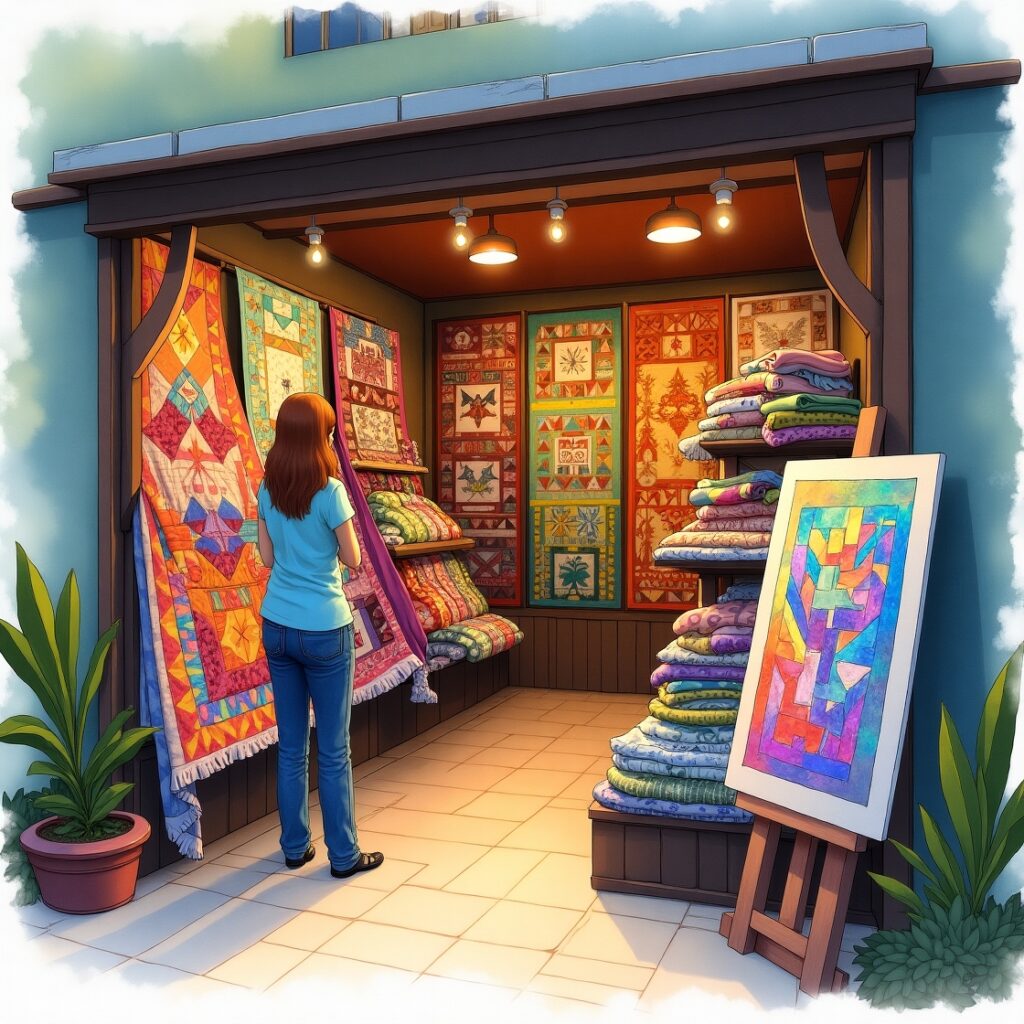
Some items look great on a table but make you pennies. Others? They’re fast to make, easy to sell, and you pocket a good chunk of every sale.
Here’s a simple breakdown:
| Product Type | Avg Price | Cost to Make | Profit Margin | Sales Volume |
| Resin keychains | $10 | $2 | High | High |
| Soy candles | $15–$25 | $6–$12 | Medium | Medium |
| Crocheted blankets | $80+ | $40 | Medium-Low | Low |
| Custom signs | $35 | $10 | High | Medium |
| Stickers (packs) | $5 | $0.50 | Very High | High |
That last one? That’s the sweet spot. Stickers, scrunchies, mini prints—they sell fast, cost little, and shoppers impulse buy them like candy.
But the kicker is this: low-priced items don’t mean low earnings. If your table pulls in 100 buyers and they each drop $10 on small items, that’s a grand.
Want to move up from “just breaking even”? Fill your booth with a mix of high-margin, fast-moving items. Then add 1–2 premium pieces to bump your average cart size.
2. Event Costs That Sneak Up on You
You know what’s depressing? Selling $900 in products, thinking you crushed it, and then realizing you only cleared $120 once everything’s paid for.
Here’s what eats up your earnings:
- Booth fee: Can range from $17.50 for tiny events to $300+ for large juried shows.
- Materials: On average, crafters spend about 30–50% of their revenue just making stuff.
- Gas and lodging: Out-of-town shows kill your margins if you don’t plan ahead.
- Meals: Nobody wants to eat dry snacks all weekend. Food adds up.
- Packaging and bags: You need ’em. They aren’t free.
- Payment fees: Square, PayPal, and others take a cut.
Let’s look at a quick example of a “good” show that… isn’t.
| Revenue | $800 |
| Booth Fee | -$100 |
| Materials | -$320 (40%) |
| Gas | -$60 |
| Hotel | -$120 |
| Food | -$40 |
| Misc. Fees | -$25 |
| Profit | $135 |
Feels different when you lay it out, right?
3. Time of Year: The Invisible Multiplier
If you’ve only ever done spring or fall fairs, you haven’t seen the full picture. The time of year changes everything.
- Holiday events (Nov–Dec): Sales spike hard. People come ready to spend.
- Valentine’s and Mother’s Day shows: Great for candles, cards, jewelry.
- Summer festivals: Tons of foot traffic, but it’s casual browsing. More hits, but lower buys.
- Back-to-school markets: Niche but can be solid if your products fit.
Most vendors say their best shows happen in late November or early December. If you’re not booked solid during that window, you’re leaving money on the table.
What Actually Counts as a High Profit Craft?
This is where the lightbulb finally clicks on for a lot of crafters. It’s not always the thing that takes the most time, looks the fanciest, or gets the most compliments. It’s the item that nets the most cash after everything else is paid for. That’s what a high profit craft really is.
So—what separates a craft that keeps you broke from one that pays the bills?
The Anatomy of a High Profit Craft
Here’s what you should look for when deciding what to make (or stop making):
- Low material costs. If the materials run you $15 for a product you sell for $20, you’re doing charity work, not business.
- Quick to produce. If you can make 10 of them in an hour, good. If it takes you a whole day to make one item? That better be a $200 piece.
- Easy to batch. High profit crafts are repeatable. You don’t want to reinvent the wheel every time.
- Lightweight. Shipping and hauling heavy things is a pain and costs more.
- Impulse-buy friendly. Small price tags = low friction. Buyers don’t need to “think about it.” They just do it.
- Can be displayed in bulk. More visibility = more chances to sell. Tiny items let you cover more of your table without crowding it.
Examples That Work (And Why)
Let’s run through some real-world winners. These are the types of things vendors say make them the most money—not necessarily in one big sale, but in sheer volume and margin.
Winning Craft Categories:
- Beaded or wire-wrapped jewelry: Low-cost materials, endless variation, and people always buy “just one more.”
- Sticker packs or art prints: You design once, print forever. High profit margin.
- Scrunchies, headbands, fabric accessories: Cheap to make, visually appealing, and often bought in multiples.
- Hand-poured candles (in bulk): Moderate cost, but if you make in large batches, the margin stays strong.
- Keychains, magnets, enamel pins: Small, collectible, easy to display, and easy to upsell.
These are what move. These are what people buy while they’re waiting for a friend or killing time. They’re what kids beg for, and parents say yes to.
You don’t have to only sell these. But they should be the backbone of your booth if you’re trying to hit consistent profits.
Products That Look Profitable but Aren’t (Usually)
Here’s a list of things people love to make, but often lose money on:
- Blankets and quilts: Gorgeous but time-intensive and pricey.
- Large signs or home decor: Expensive to make and transport, and sales can be hit-or-miss.
- Original paintings or fine art: Great if you’re known, hard to sell cold at a casual craft fair.
- Custom items that require prep or post-sale work. Takes time, adds risk, slows down your day.
You can absolutely keep these in your lineup if they make you happy. But don’t build your whole table around them unless you’ve cracked the code on selling them regularly.
Once you know what makes a high profit craft, the next question becomes: can this actually replace a job? Or is it just extra weekend cash?
Can You Actually Make a Living from Craft Fairs?
Short answer: yes. Longer answer: only if you treat it like a job. Because it is one. The vendors who earn real money—like $45,000 or more a year—aren’t winging it. They don’t guess which events will work or throw together stock the night before. They’ve figured out what sells, where it sells, and how to keep costs low without killing themselves in the process.
What It Takes to Go Full-Time
Let’s run the math on what a full-time income looks like from craft fairs.
Say you want to make $45,000/year in revenue from craft shows.

- You hit 32 good events a year (about 2–3 per month).
- You average $1,400–$1,500 in sales per event.
- You keep costs at 30–40% of sales (materials, booth, gas, food, etc.).
That means you’re clearing about $850–$1,000 profit per show. Multiply that by 30+ shows? You’re there.
Is that easy? No. But it’s real. These vendors plan their entire year around events. They pre-pack product bins, set up systems, book fairs months in advance, and know which towns are worth the travel.
What’s More Common: A Solid Side Hustle
Most vendors fall into the part-time or seasonal category. And that’s fine. A side hustle that brings in $7,000 a year is still $7,000.
Here’s an example:
- You do 5 events a year.
- You aim for $1,400 per event in sales (which is very doable at mid-size and large shows).
- Even with 40% of that going to costs, you’re still taking home around $840 per show.
- That’s $4,000–$5,000 a year in extra income, give or take.
That money might go to debt payoff, vacations, holiday spending, or even funding your next craft supply binge.
Some vendors use that money to test product ideas, then shift to selling online or to shops once they know what hits.
Craft Fairs as a Marketing Tool
Not every show needs to be wildly profitable to be useful.
- You get real customer feedback on pricing, product design, packaging.
- You hand out cards and grow your email list.
- You build your reputation in your local area.
- You figure out your bestsellers, which is gold if you decide to sell online.
- You network with other vendors—many of whom are open to collabs, partnerships, or wholesale referrals.
A craft fair isn’t just about how many dollars you made that day. It’s also about how many customers remember you.
And that memory? That’s what helps you build a real, sustainable business.
How to Increase Your Craft Fair Income (Without Burning Out)
This is where a lot of vendors get stuck. You’re showing up. You’re selling. Maybe you’re even selling out. But at the end of the day, your profit margins are still thin and your back hurts from hauling tables.
How do you actually make more without working double?
It comes down to a few small shifts that stack up fast.
Maximize Your Margins With High Profit Crafts
Let’s go back to what we said earlier. The stuff that makes you money doesn’t always look impressive—it just works. If you’re not focused on high profit crafts, you’re leaving cash on the table.
Ways to push your profit up without raising prices across the board:
- Add bundle deals. Example: “3 scrunchies for $12” instead of $5 each. It increases your average sale and helps you move more units.
- Use up scrap materials. Turn leftover fabric or clay into smaller items. People love mini add-ons.
- Stop offering things that don’t sell. Dead weight clutters your table and drains your energy.
- Repeat your bestsellers. No need to reinvent your product line every month. Consistency builds recognition and trust.
Display Like It Actually Matters (Because It Does)
You can have the best products in the building. If your table’s a mess, people won’t stop. Or worse—they’ll stop, look confused, and keep walking.
Make it easy for people to understand what you’re selling in 5 seconds or less.
Tips from vendors who consistently outsell their neighbors:
- Group items in themes (not just random piles).
- Use height. Crates, risers, shelves—make your display vertical.
- Clear signage. Every product needs a visible price. No one wants to ask.
- Keep the table neat. Don’t overload it. Give products space to breathe.
- Use real lighting. Bring a clip-on LED lamp or two if the venue is dark.
Bonus: people take more photos of cute, well-lit booths—and tag you.
Make Buying Easy
Weirdly, a lot of vendors still forget this one.
People will buy more if the process is fast and smooth.
Here’s how to make it simple:
- Accept cards and mobile pay. A lot of shoppers don’t carry cash.
- Offer small bills for change. If you sell $8 items, don’t expect everyone to have $3 bills.
- Bag it up quick. Keep paper bags or cute packaging nearby. A clean, quick handoff = better customer experience.
- Have business cards. Even if someone doesn’t buy, make it easy for them to come back later.
Capture Every Opportunity
Not every shopper will buy. That doesn’t mean you lost them forever.
Use your booth as a marketing tool too.
Ways to keep people connected:
- Add a QR code sign that links to your Instagram, Etsy, or email list.
- Offer a small freebie (like a downloadable sticker or pattern) in exchange for an email signup.
- Run a giveaway. One entry for every $10 spent, or anyone who follows you on social.
- Ask if they want a receipt by email. That gives you one more way to stay in touch.
You’ll get more traction over time by building your own little community, not just waiting for sales.
Are Craft Fairs Still Worth It? (Even If You Don’t Sell Out)
Let’s be honest. Not every show is a slam dunk. Sometimes you drive two hours, set up in the rain, and end up with just enough sales to cover lunch. That doesn’t feel worth it. And yeah—sometimes it really isn’t.
But other times? You walk away with way more than what’s in the cash box.
Craft fairs aren’t just a place to sell things. They’re where you test, learn, and connect. Even the slower events can push your business forward—if you use them right.
The Non-Money Wins (That Still Grow Your Business)
Here’s what a fair can give you besides cash:
- Live feedback. You’ll see which items people touch, comment on, and actually buy. Priceless info.
- Brand exposure. A customer might not buy today—but now they know you exist.
- Content for social. Take pics of your booth, products in action, happy customers. That’s weeks of content.
- Product photos. Natural light at shows? Way better than that dark corner at home.
- Networking. You meet other makers, possible wholesale buyers, maybe even future collab partners.
There’s no algorithm messing with visibility here. You’re face to face with your audience. That’s rare.
When Is It Not Worth It?
Some signs a show probably isn’t a good fit:
- You’re traveling too far and spending too much just to get there.
- The event isn’t promoted and barely anyone walks through.
- The shoppers aren’t your target market (example: you sell punk patches at a luxury art fair).
- Your sales can’t even cover your base costs.
It’s okay to say no. Not every show is for you.
Keep a running list after every event:
- What sold well?
- What didn’t move?
- What did you hear customers say?
- Was the event organized?
- Was it worth your time?
Track enough of these, and you’ll start to see clear patterns.
Craft Fairs as a Launchpad, Not the End Game
Lots of crafters use fairs to test the waters before going online full-time.
Here’s why:
- You can see what sells before investing in ads or a big website.
- You can build an email list and Instagram following while you sell in person.
- You can shift into wholesale with your bestsellers once you’ve tested demand.
Craft fairs aren’t the only path—but they’re a powerful one. Especially for makers who want to stay hands-on and connected to their customers.
So… How Much Do You Actually Make at a Craft Fair?
Let’s cut through the noise.
The truth is: it depends. But not in a vague way. It depends on a few very real, very measurable things—like your booth fee, your pricing strategy, your product lineup, and how many high profit crafts you’ve packed in that bin behind the table.
Here’s a quick breakdown of what the math looks like at different levels:
| Event Size | Estimated Sales | Costs (Avg 40%) | Estimated Profit |
| Small | $95 | $38 | $57 |
| Medium | $633 | $253 | $380 |
| Large | $2,000 | $800 | $1,200 |
Now run that against how many events you do per year:
- 1–5 shows/year: Expect side cash, maybe $1,000–$5,000 in profit.
- 10–20 shows/year: That can turn into real part-time income.
- 30+ shows/year: You’re pushing into full-time territory, assuming your product line has high margins and you know your best markets.
This isn’t theory. This is pulled straight from hundreds of vendor stories, sales reports, and actual financial breakdowns.
FAQ: What Vendors Ask Most About High Profit Crafts
What’s the easiest high profit craft to start with?
Stickers, jewelry, and fabric accessories (like scrunchies or keychains). They’re low-cost, fast to make, and easy to display.
What’s a good profit margin to aim for?
At least 50%. Meaning if you sell something for $10, it should cost $5 or less to produce. Ideally, even lower.
How many products should I bring?
Enough to make 5–10x your booth fee. If your average product sells for $15 and your booth fee is $100, bring at least $750–$1,500 in inventory.
What sells best at holiday markets?
Gifts. Think candles, ornaments, bath sets, jewelry, and customizable items. Bonus if it’s under $25.
How do I know if my product is a high profit craft?
Ask yourself: does it sell consistently, cost little to make, and require little time to reproduce? If yes, it probably is.
Can I make real income without doing 30 shows a year?
Yes—but you’ll need to either charge more, sell online too, or expand into wholesale. Fewer shows = each one needs to work harder for you.
Is it better to focus on cheap items or expensive ones?
Start with a mix. Small items bring traffic. Larger pieces increase your total sales. Use high profit crafts as your “bread and butter,” and let bigger pieces be the bonus.
Final thought? Craft fairs can make you real money—but only if you treat them like a real business. You’ve got to know your numbers, know your buyers, and load your table with high profit crafts that move fast and leave margin in your pocket.
You don’t have to go big right away. You just have to start smart.

